HTML Video Project
https://dtc-wsuv.org/qharris23/html_project/
View PostDTC 491 Advanced Digital Cinema
Washington State University Vancouver
https://dtc-wsuv.org/qharris23/html_project/
View PostBlog Post: Describe your final project idea. Which modules in this course will you explore (try for at least two): continuity, montage, looped video, composited video, AI cinema. networked video, HTML cinema or the video essay, etc.
For my final project I want to do a continuity montage video. For the video I want to depict a number of shots that are tied together by a single theme that paint a bigger picture. I want to use the tips and techniques I have learned while taking this course to help visualize my picture.
-Quincy
View Post(I had to scrap the Cherry Blossoms at the Portland Waterfront Park idea. By the time I was able to get back down there for more footage the trees were bare pretty much and they weren’t looking as good as the first time I was down there. So, I refocused the video essay on the experience of the PlayStation Virtual Reality 2 headset.)
View PostBoth the writing of Bill Viola and the Bandersnatch episode have similarities due to how there’s a connection between choice and outcomes. Both have references to memory and how memories can lead to making certain choices. After getting 4 of the 10 main endings, I was super entertained.
“It is of paramount importance now, as we watch the same education system that brought us through school (and the same communications system that gave us the wonderful world of commercial TV and AM radio) being mapped onto these new technologies, that we go back and take a deeper look at some of the older systems described in these pages. Artists not shackled to the fad and fashion treadmill of the art world, especially the art world of the past few years, will begin to see the new meaning that art history is taking on.” (Viola, Bill) I think this holds true to today and how things are evolving with ai technology.
I think this format is moving towards the video game industry. I think I see this playing out better for people who are sitting down to choose their own adventures and practice the multiple outcomes when they’re in a play a game kind of mood. Most people I know use movies to fall asleep to or watch for an escape.
-Quincy H
View Post-Quincy Harris
View PostAI Movie Clip Prompt: “Harmony of Time”
The scene opens on a serene, otherworldly landscape under a twilight sky. The horizon is adorned with floating islands, each hosting its own unique ecosystem. A river, shimmering with hues of gold and azure, flows gently through the air, weaving between the islands without gravity’s constraint. The camera follows the river’s course, revealing clocks and hourglasses seamlessly integrated into the natural environment. Trees with leaves shaped like watch hands rustle in the wind, and flowers bloom in fast-forward, their petals opening and closing with the rhythm of seconds.
As we delve deeper into this dreamscape, the river leads us to a grand, crystalline clock standing majestically in the center of a floating meadow. The clock is unlike any other; its gears and hands flow like liquid, changing shape and form, symbolizing the fluidity of time in this realm. The meadow around the clock pulses with a soft, ethereal light, casting long, dancing shadows that play along the ground.
Suddenly, the clock begins to chime, its sound resonating through the landscape like a harmonious melody. With each chime, the scenery transforms: day turns to night, then back to day; seasons change within moments, showcasing the beauty of spring blossoms, the warmth of summer sun, the golden hues of autumn leaves, and the serene stillness of winter snow, all coexisting in a beautiful, ever-changing cycle.
The camera pans up to the sky, where constellations of stars move swiftly, tracing patterns of ancient timepieces across the cosmos. A shooting star crosses the sky, leaving a trail of sparkling light that forms the silhouette of an hourglass before fading away.
As the clip nears its end, the view zooms out, showing the Timekeeper standing atop the highest floating island, watching over the harmonious flow of time in this dreamlike realm. A sense of peace and understanding reflects in his eyes, as if he’s found the key to balancing time’s relentless march with the timeless beauty of the moment.
The scene fades to black, leaving viewers with a sense of wonder and a longing for a world where time flows in harmony with life itself.
Look or Style of Film:
Visual Effects:
Visual Quality & Film Stock: The clip should be rendered to mimic the quality of high-resolution 70mm film stock, known for its rich detail, depth of color, and dynamic range. This choice will give the landscapes and time elements a tactile, immersive feel, with a fine grain texture that adds to the dreamlike atmosphere.
Cameras & Lenses: Utilize digital simulation of vintage anamorphic lenses to capture the wide, panoramic views of the floating islands and the dreamlike landscapes. These lenses will contribute to the surreal quality of the scenes by creating characteristic lens flares and a slightly distorted, yet beautiful wide field of view, emphasizing the vastness and the ethereal nature of the environments.
Lighting: Employ soft, naturalistic lighting with a golden hour glow for daytime scenes, enhancing the dreamlike quality with warm tones and soft shadows. For night scenes, use cooler, moonlit tones with strategic low-light conditions to highlight the mystical elements of the landscape, such as the shimmering river and the glowing crystalline clock. Lighting should be dynamic, subtly changing to reflect the passage of time and the transformations within the dream world.
Color Scheme: The clip should feature a vibrant, yet slightly desaturated color palette, emphasizing pastels and muted tones to create a sense of otherworldliness. This palette will make the transitions between seasons and times of day appear seamless and magical, while still providing a visually rich and engaging experience.
Production Design, Sets, & Costumes: The production design should be intricate and detailed, with each element of the dream world carefully crafted to reflect the theme of fluid time. Sets like the floating islands and the crystalline clock should combine organic and fantastical elements, using materials that appear both natural and ethereal. Costumes for the Timekeeper and any other characters should be timeless, blending elements from different eras and cultures in a way that transcends specific time periods. Fabrics should flow and change, reflecting the mutable nature of time, with subtle, intricate patterns that hint at the complexity of the timekeeper’s realm.
General Aesthetic: The overall aesthetic should draw inspiration from classic surrealist films and paintings, with a modern twist that incorporates advances in visual effects and animation. The goal is to create a visually stunning piece that feels both timeless and innovative, inviting the viewer into a world where time is not a constraint but a canvas for beauty and exploration.
This detailed approach aims to guide the AI in creating a short movie clip that not only tells a compelling story through its visuals but also achieves a specific, high-quality cinematic look and feel, making “Harmony of Time” a captivating and immersive experience.
-Quincy Harris
View Post(For this Continuity Loop video, I don’t know why the shots are squared, it may have to do with how I tried using Premier settings to change the shot from Portrait to Landscape.)
View PostAn example of a rhythmic loop. The sounds match the things in the video and starts over with the sound effect ramping up and pulling back. The editing of the video has the sound effect starting off at one pitch and ramping up. It then starts perfectly over and was a good use of the sound effect.
This is a gif loop video. This is a display of cyclic loop. The editing being so smooth in this instance makes the scene appear seamless. If this was played on repeat you can’t tell where it starts and stops.
This loop video I thought to be a ‘Timeless’ loop due to how it starts and stops. The editing effects make the door opening and closing into the person who opened it look really cool I thought.
-Quincy Harris
View Post
Cameron and Quincy
View PostCameron and Quincy
View Post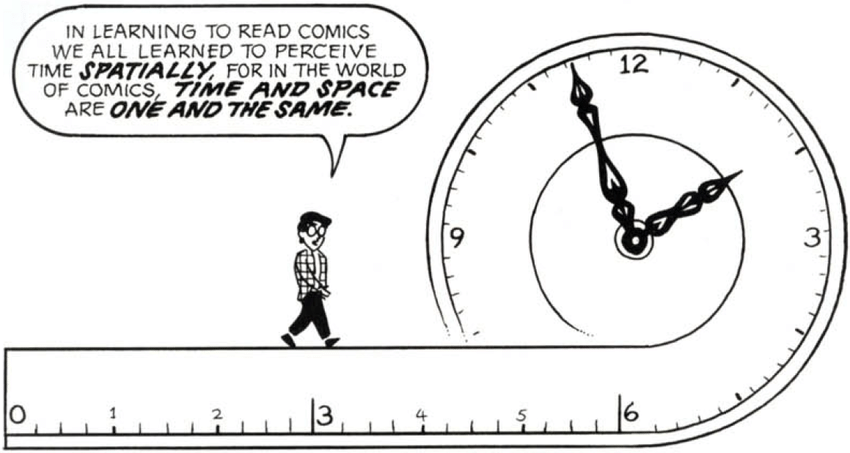
Scott McCloud’s visual essay made me think about the possibilities of time manipulation in digital cinema when he talked about the space between the panels being a “gutter”. From what I gathered from the comic is that the gutter is a moment where time is dictated by the reader. The gutter represents the moments after what we just saw, or in some cases could be guiding the flashback to a memory of the characters. 
Movies that I can think of that do a good job at showcasing a manipulation of time are Inception by Christopher Nolan. The movie plays with the idea of dreams happening within dreams. In each dream time moves slower and slower.

There was also Quentin Tarantino’s Pulp Fiction film. The film used a disjointed narrative structure. The film used a timeline to help tie together stories that made the whole movie’s story.

There is also movies that have been iconically referenced like the Matrix. Where Neo is dodging bullets in slow motion. The slow motion was to represent the movement of time.

-Quincy Harris
View PostAutumn Mist is an amazing French short film. It’s directed by Dimitri Krisanoff. It’s a 12 minute silent film that was released in 1929.
The main theme of the 12 minute movie is that a woman is left by her lover and is dealing with the emotions that follow her loss. There’s a lot of focus on her face conveying the emotion of hopelessness and sadness.

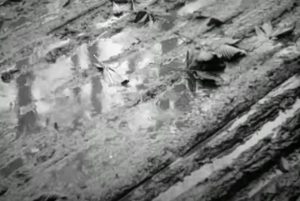
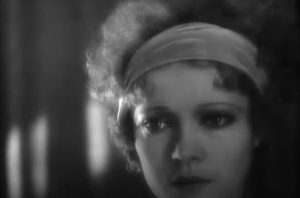
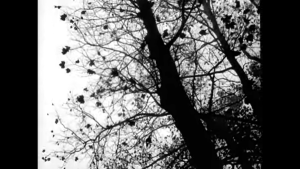
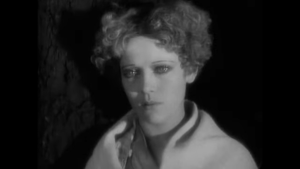

There’s a moment where it starts raining and the camera focuses on the rain hitting the ground. This moment shifts the tone to let the viewers know this is her physical manifestation of her emotions happening on scene. This is later backed up by the fact that when the sun comes out we see her shift from her dark thoughts to seeing the light. Both physically and metaphorically.
Overall this is a great example of how shots can convey emotions. The shots can tell just as much of a story as if someone was reading the words to the story to you.
Overall it was a great watch.
-Quincy Harris
View PostI had some issues coming up with a concept or story that could help depict continuity editing. Though, I feel this video of me making and enjoying a cup of coffee worked with the overall technique needed for this video. I tried to keep the coffee mug in the same hand for every different walking scene. Also, I picked up the coffee mug using the same hand that I am walking and holding the coffee mug in for those scenes.
-Quincy
View PostMy 30 second day video I wanted to showcase my snow day off. Unfortunately due to the weather my tri-pod phone stand arrived late so I had to get creative with how I filmed my shots. I wanted to showcase time lapse shots of the day changing from morning to day and from day to night. The tasks in between are my usual chores such as doing the dishes, keeping up with laundry, and cooking dinner along with playing a video game. I am no professional when it comes to filming something like this, to be honest it was my first attempt at this idea. I think it was a cool exercise and I tried to incorporate a mixture of video filmed moments and still photos to tell the story.
-Quincy
View PostIntroduction:
The 1998 film “Run Lola Run” is a true work of cinematic magic. Director Tom Tykwer did a magnificent job directing this experimental thriller. Tykwer does a masterful job using this film to visually build sandcastles out of the sands of time.
Narrative Storytelling:
The film uses continuity rules to stitch together each scene. Tykwer does so in a way that makes you as the viewer feel like you’ve watched a story that had the good ending. Especially compared to the first two story outcomes for the characters.
Editing:
Franka Potente is the actress who plays Lola. She is tasked with getting to her boyfriend Manni before he changes their lives forever. The shots are edited in a way that makes you feel Lola’s sense of urgency. Shots of her running out of her apartment, down the street. She passes people on her mission and were shown different outcomes for most of them each time she hangs up the phone and starts the cycle again. Tykwer uses still images flashing on the screen to show us the outcomes of these people with quick flashes on the screen. The soundtracks also help build the scenes of Lola running.
Time:
Tykwer uses scenes to compress how time feels or stretch how long time feels. Each section of the film is 20 minutes. There are 3 different runs that Lola goes on while showing the time on the clock we also feel the time due to the clear starts and ends to each of the runs. Overall, this film has great passing that keeps you watching and involved in the story.
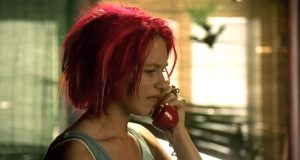


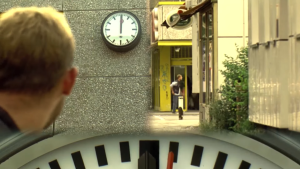

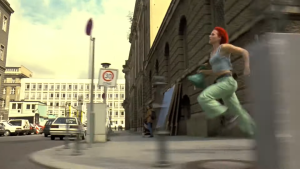
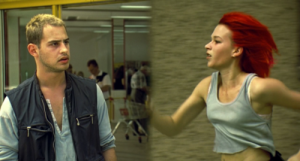
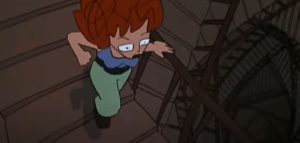
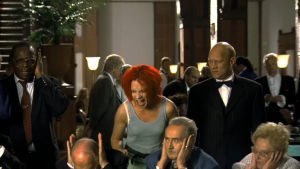

Conclusion:
“Run Lola Run” is a great showcase of what cinema can do for storytelling. The momentum of the story mixed with Lola’s determination to achieve her goal each time makes for an amazing tale. Tykwer made amazing editing choices to help tell this story. This film can be rewatched and still match the energy the first time it was viewed. An amazing film I’d recommend to anyone to check out at least once.
-Quincy Harris
View Post
Hello my name is Quincy, I am a DTC Major. I have about 2 years of video editing experience in Premier Pro and iMovie. I am interested in video editing and audio work.
View Post